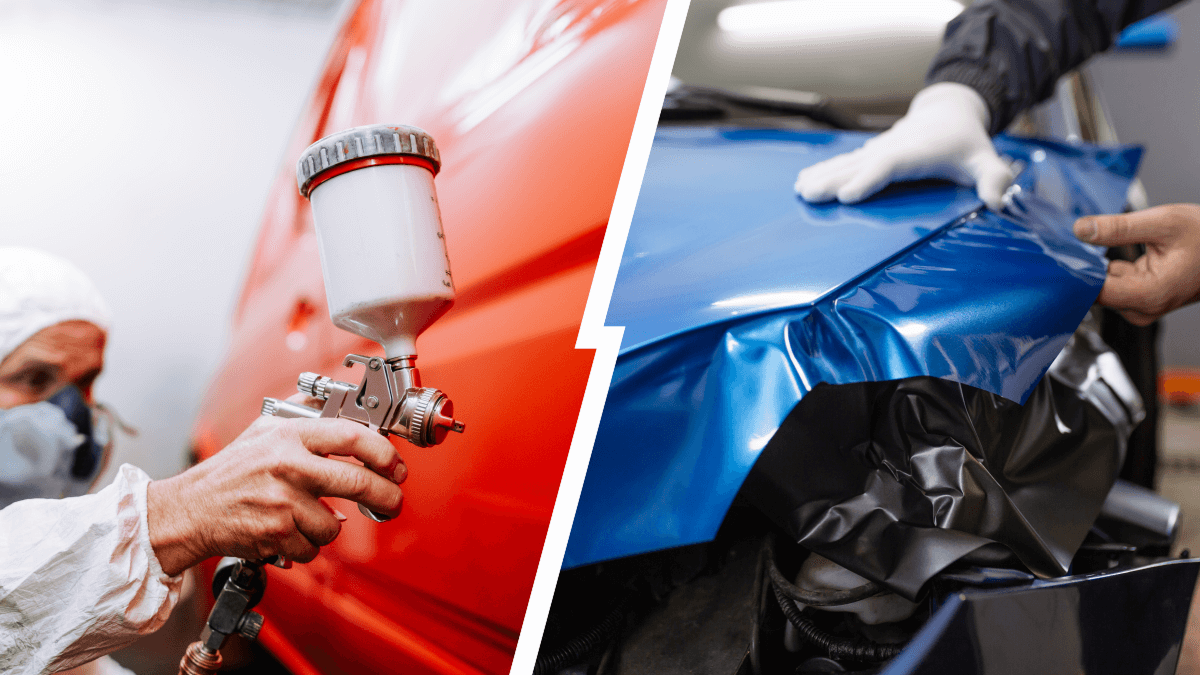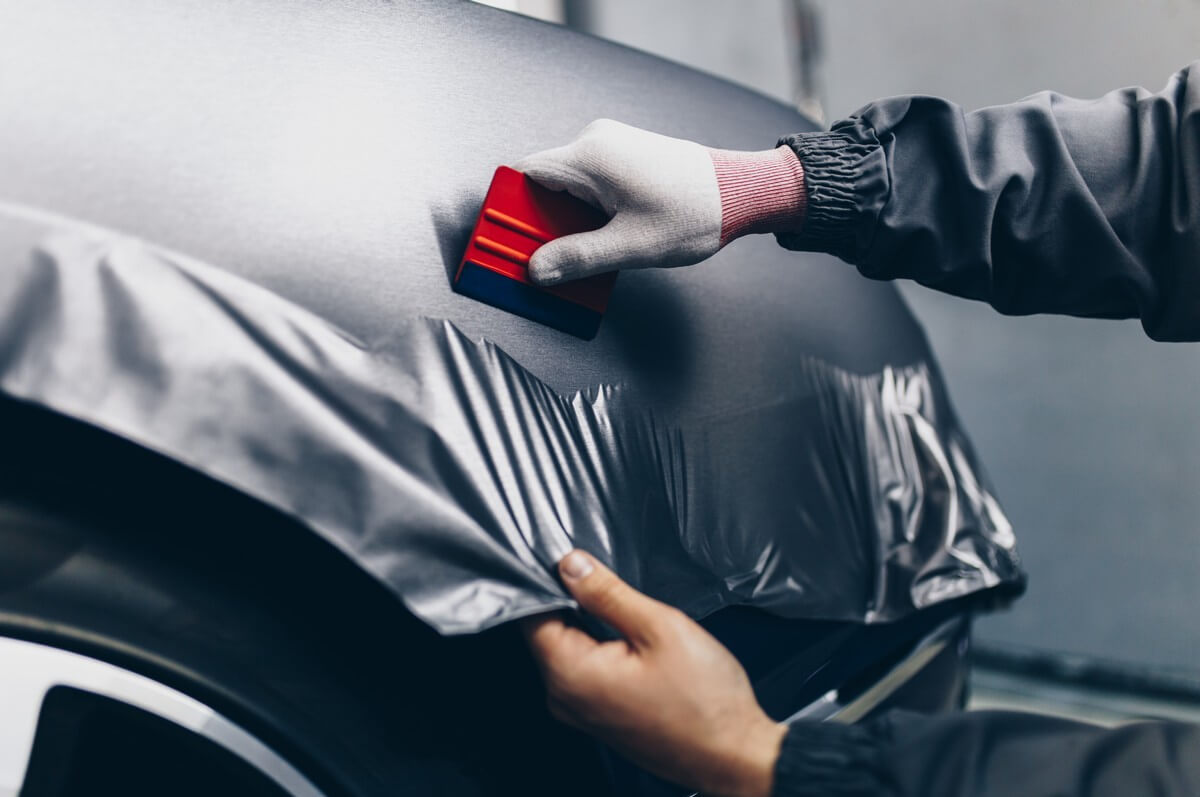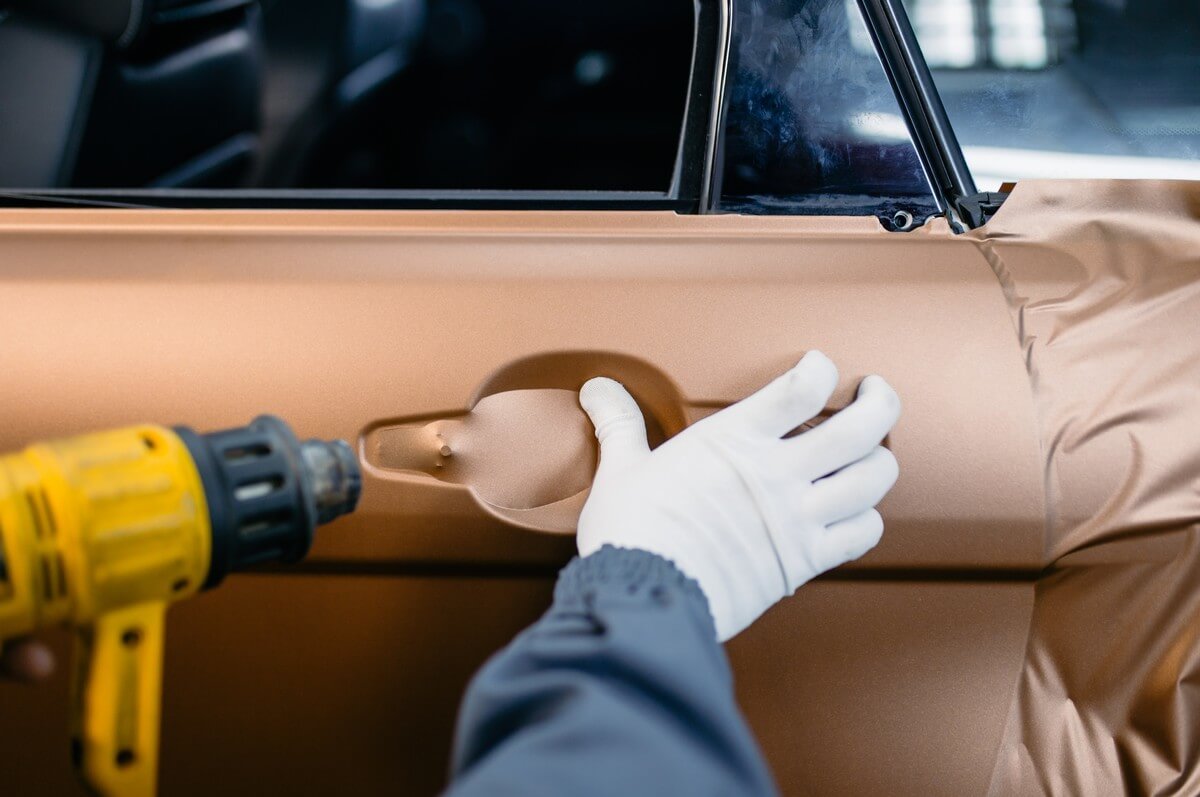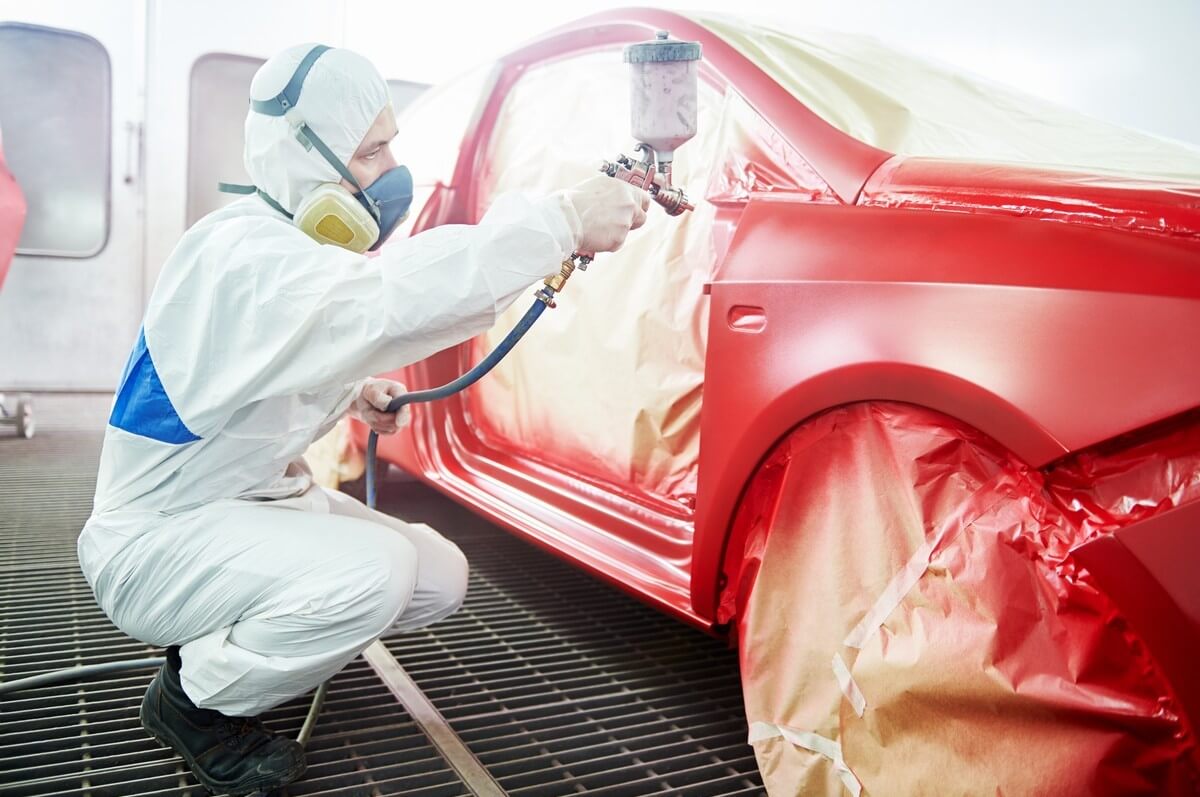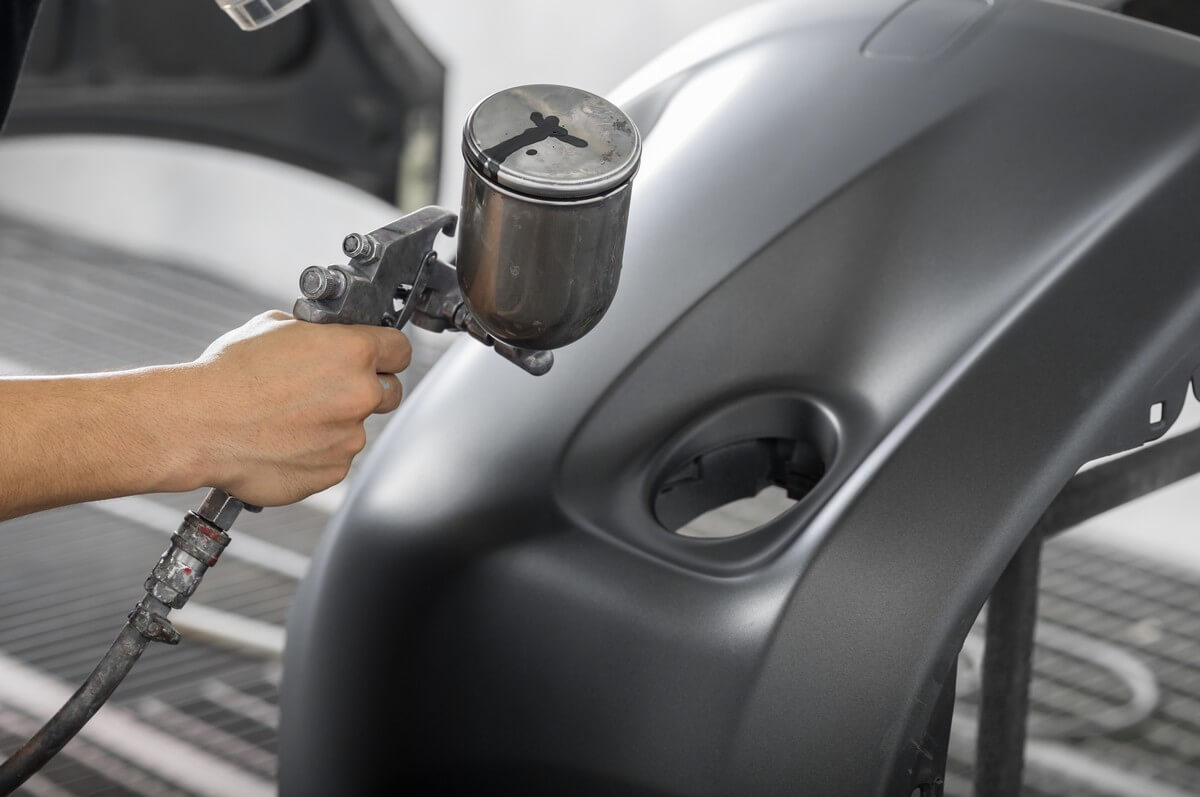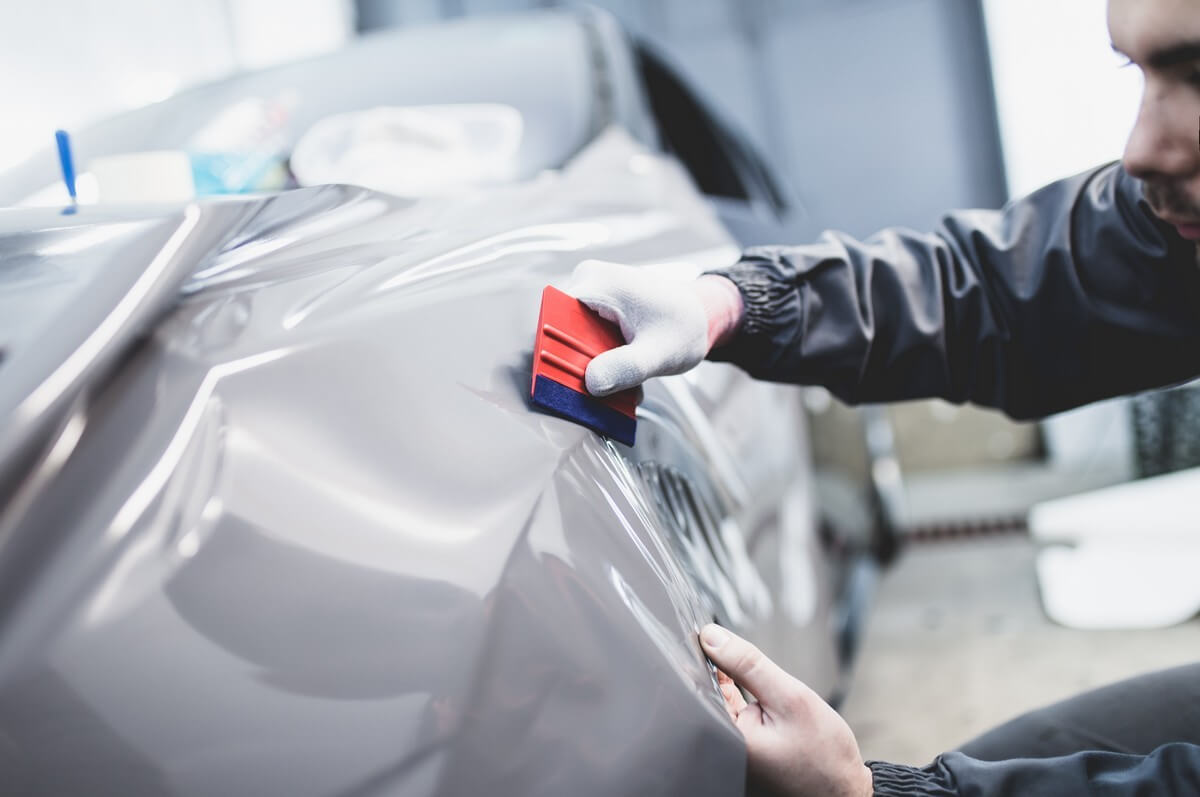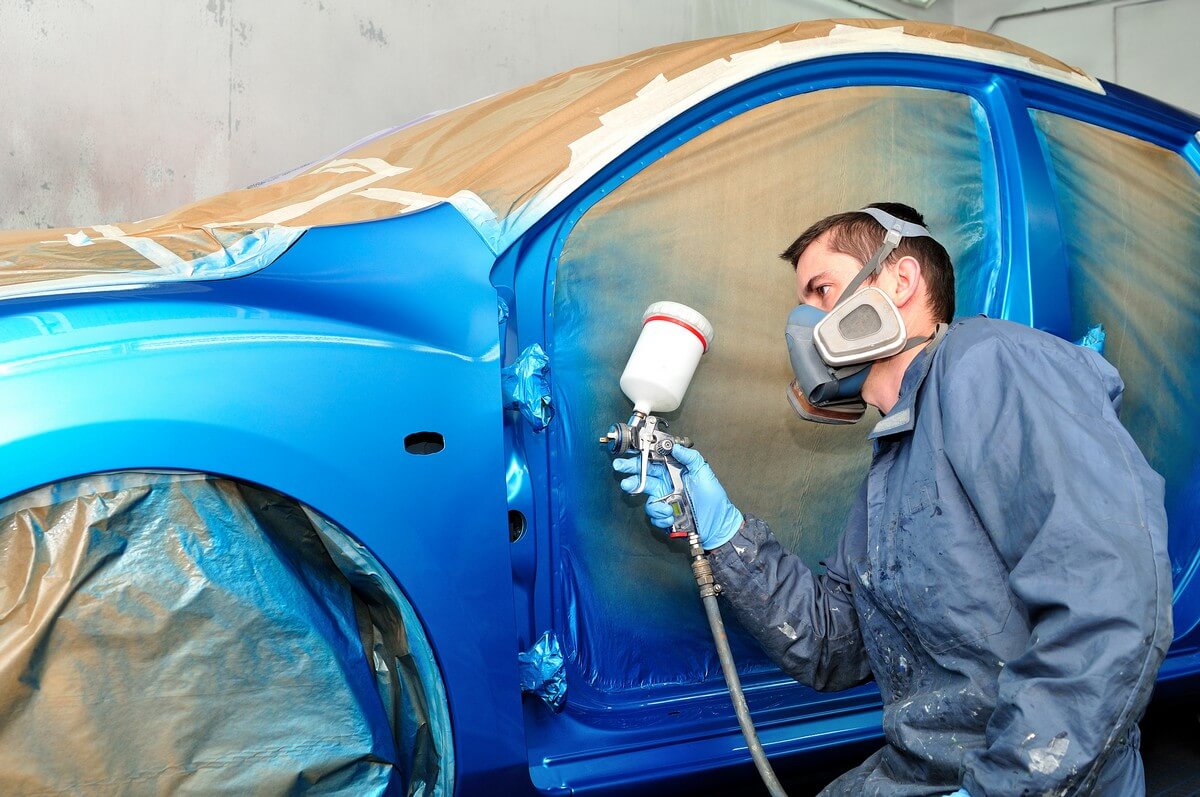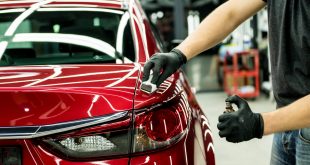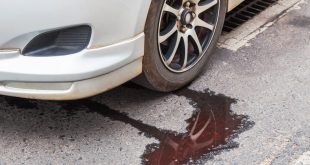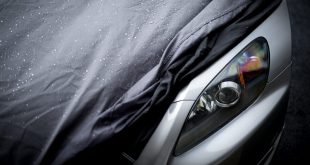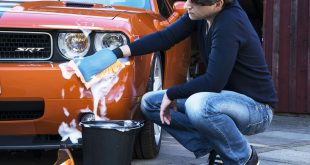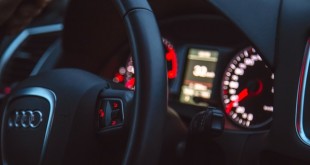Painting or wrapping? Both have their pros and cons, but which one is really better?
So, you bought your dream car, and you fulfilled your childhood dreams? For some of us, a dream car is the epic ’67 Ford Mustang; for others, it’s a supermini 2020 Fiesta, and really lucky SOBs get to enjoy a 2021 Lamborghini Huracan. Whatever you are currently driving, life is too short and precious to be just plain and boring. So you decided to change your wheels? Done. Put some spoilers and splitters? Done. Tinted windows? All blacked out. What about the color? Well, this is a difficult one.
Repainting a whole car is an expensive and extensive process (if you want it done right), especially when changing color. Is there another way? Of course, there is. Car body wrapping is a popular solution if you want to add flair to your car and is perfect for personalization as it offers unlimited choices. We will explain the benefits and drawbacks of body painting vs. body wrapping, and hopefully, help you choose between both.
What’s Car Wrapping and How it’s Done
Car wrapping is when a vinyl wrapping material is applied onto the body panels to (temporarily) change the color or get the desired effect without spraying the whole car. That is a simple definition, at least.
Of course, the first thing to do is to choose the right vinyl foil for your vehicle. Many companies specialize in wrapping vinyl, and you should not go cheap on this. Choose only the vinyl that is produced for automotive purposes. If it’s not suitable, it can damage the car’s color, especially when you try to take it out once you had enough of it. The wrong type of vinyl can even crack and fade under the sun or create air bubbles.
However, not every wrapping is done to change the original color of the car. You can also choose a clear sheet of vinyl (without pigment) to protect the original paint. It works great against smaller scratches as it adds another layer on top of your body paint. Clear vinyl can also protect the original paint from fading under the sun to some extent.
Color vinyl is another solution, and you can go quite crazy here. Choose whatever color you want from lime green to mate blue; you can even go for carbon fiber black if you are into it.
You’ll also need some cutters, measuring tape, and a couple of tools for squeezing the air bubbles out while applying the wrap. A heat gun will help you shrink the vinyl around curves for that perfect fitting look.
When prepping your car, it’s essential to remove all the badges, door handles, door moldings, and basically anything that could prevent you from wrapping each panel perfectly. The surface should be immaculate as the vinyl will trap every little dirt under the wrapping. And don’t forget to wrap the vinyl over the panels so the ends are not visible.
When you are done, you can reassemble all the parts you took off. Easy?
Well yeah, as long as you have enough time, patience, and steady hands.
Pros and Cons of Wrapping
Pros
- Wrapping is cheaper than painting and saves time as well;
- You can easily change the look of your car as often as you want;
- If you are bored with the new color, just peel off the vinyl, and you’ll have your car back as it was;
- Protects from small scratches and rocks;
- Will keep the original paint pristine.
Cons
- Finishing the wrap requests cutting off the excess vinyl, and untrained hands could damage the car’s original paint;
- Glue stains after you peel off the vinyl, which depends on the quality of the vinyl and trained hands as well;
- Can’t replicate color depth with wrapping.
What’s Spray Painting and How it’s Done
Spray painting is basically covering the old color of your car with a new layer. You can keep the same color as it’s easier to just refresh it and you don’t have to redo every single bit of metal that way. You might have seen a black car from the outside, but when you open the hood or door, you can see that it was initially yellow or white?! We don’t want that, do we?
The easiest part is choosing the color, although you should go for the more expensive ones as it’s not something you’d want to save on.
Back to the preparations! Remove all the non-metal parts from the car or use some material like paper or PVC and tapes to cover the windows, lights, door handles e t.c. You can do yourself a favor and cover the ground under the car as well.
→ Read more: Best Automotive Paint Gun For Beginners ←
Next is sanding the surface that will be spray painted, using the various sandpapers. Start with 600-grid sandpaper, and follow with 1500-grid for a smoother surface. A long and hard process and most boring, sometimes even therapeutical.
Then repair any rust, damages, or imperfections, and sand again.
Cleaning the surface with tack cloth is the only way to get a factory finish. You will, of course, need a dust-free workshop to maintain it clean.
Spraying primer is an essential part of the painting process as it fills small imperfections, and ensures the base coat will actually stick and not flake after a year or two. Then sanding again, cleaning it with soap and water, and a tack cloth, and several hours/days later, you are ready to paint!
It’s worth mentioning that spray painting is an art in itself. It might take years of practice before you can safely say that you can spray paint without making a couple of mistakes (and drips). Not to forget that auto body repairs and spray painting require several specialized tools and it might not be worth the hassle and money to buy everything only to paint a single car.
Pros and Cons of Spray Painting
Pros
- Spray painting is permanent and has a visual and protecting effect on your car’s body;
- You can go crazy with the color choice and patterns, and flames and what’s not!
Cons
- Time-consuming;
- Energy-consuming;
- Cash-consuming;
- No place for errors;
- The paint is permanent.
Price Comparison of Painting vs. Wrapping
Obviously, wrapping is way cheaper than spray painting—even when not considering the time needed for spray painting itself, the preparation alone is already quite time-consuming. Then add the tools and paint, a full paint job can quickly amount to a hefty sum.
On the other hand, wrapping requires only very basic tools and vinyl is usually affordable. The prices can vary depending on the quality of the vinyl and manufacturer but it usually starts from $15-20 for 5 sq/ft of car wrap vinyl film. Of course, you’ll probably need more than that to cover a whole car but that would still cost less than just a spray painting gun.
When spray painting, you need to factor in the cost of sandpaper, body filler, primer, paint, tape, masking paper, etc.— you can do the math here.
Recommendations—Which One is Better?
Vinyl wrapping is for those who are more impulsive and want to change their car’s body color more often than their hairstyle. If your car is a rental, wrapping is also the only option available since it can be removed and returned to its original color—plus it will also protect your car’s paint so you don’t have to pay extra for those scratches once you bring it back to the dealer.
Meanwhile, spray painting is really next-level but it also costs more, takes a lot more work, and is permanent. On the other hand, it’s also much more resistant, lasts a lot longer, and small defects are easier to fix. Indeed, if you were to scratch your wrap and tear the vinyl, the whole panel would need to be re-wrapped. With paint, you could probably just buff the panel and call it a day.
Last Words
To sum it all up, there is not one definitive right or wrong answer here. Both options come with their own pros and cons and might be better depending on your budget and skill set. But whatever you choose, it really doesn’t matter as long as you achieve the desired effect. You can even try both and see what fits you the best. Of course, take your time and enjoy the process, as the whole point of this exercise is to make your car to your likings and add a bit of soul to it.
However, it’s important to keep in mind that wrapping is a lot easier to do. Always keep in mind that become a pro at automotive spray painting will require a lot of practice and can’t really be undone. A neat trick is to first buy a spare hood or door from your local junkyard so you can try your hands on something else than your daily driver. On the other hand, vinyl comes with a much bigger error margin as it can be installed and removed at will.
In any case, make sure to buy quality products and tools and give yourself some time to learn. And always remember that practice makes perfect!


